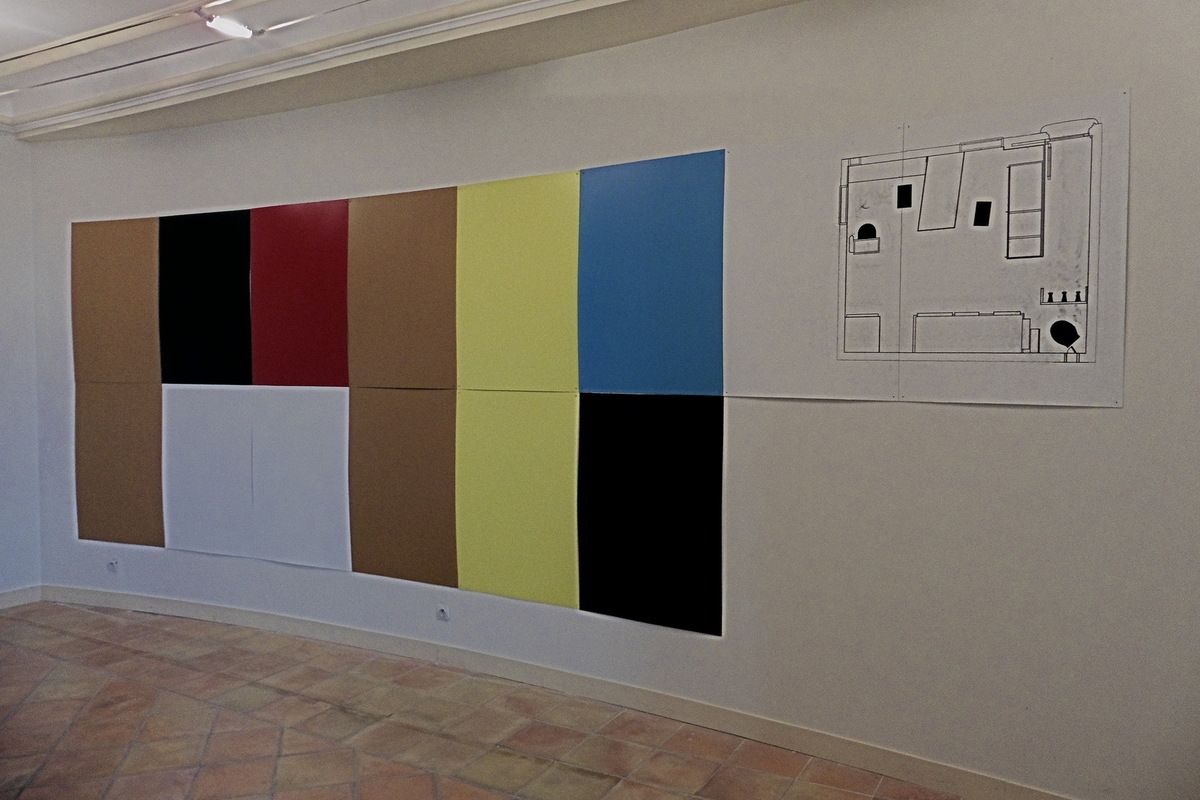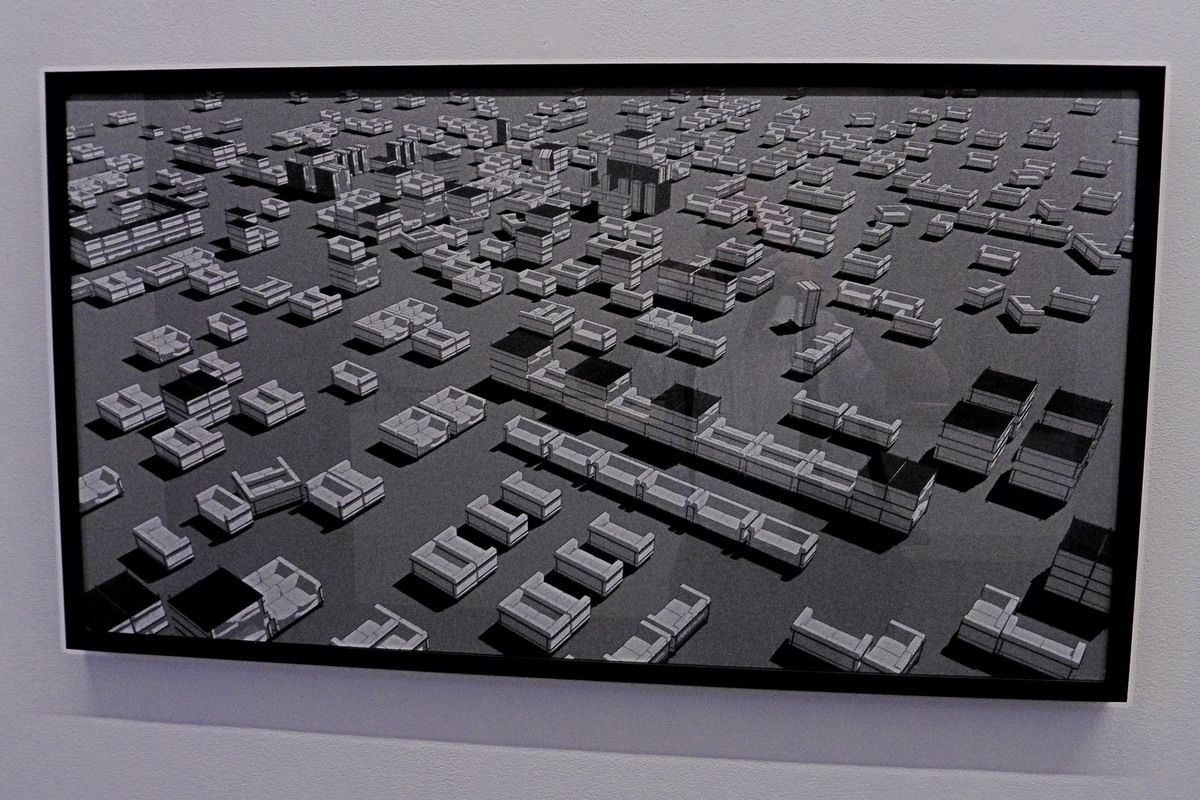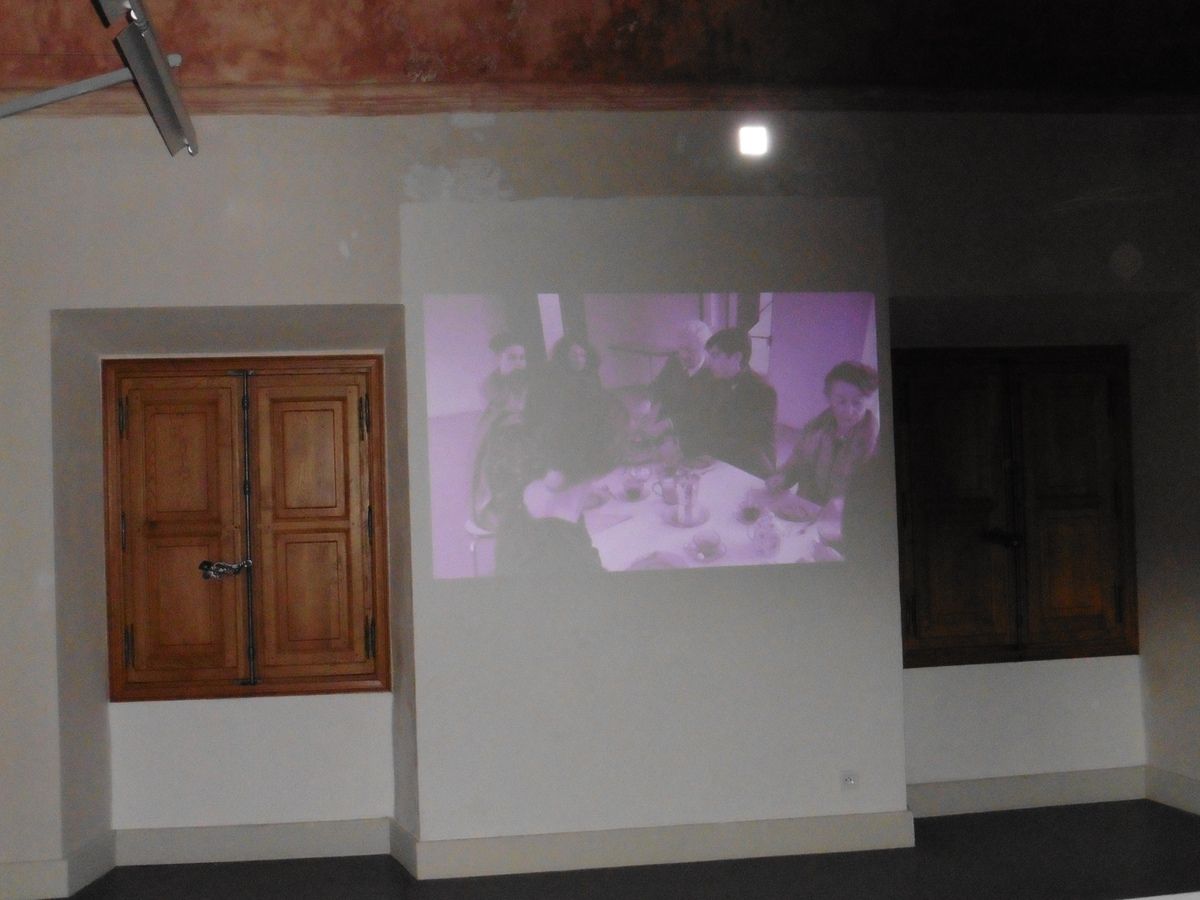VariationsTheCorbusier
Art work of contemporary art and architectural models. Art work of : Michel Aubry, Neal Beggs, Lieven de Boeck, Ulla von Brandenburg, Martin Caminiti, Jennifer Douzenel, Ibai Hernandorena, M/M Paris, Renaud Leyrac, Isa Melsheimer, Stéphanie Naza, Eve Pietruschi, Anne et Patrick Poirier, Stéphane Protic, Emmanuel Régent, Amandine Rousguisto, Juliao Sarmento, Mathieu Schmitt, Isabelle Sordage, Xavier Theunis, Xavier Veilhan, Tomoko Yoneda, models of : Tadao Ando, the Zhaw (Zürich) and the schools and highschools of the Alpes - Maritimes. Castle of Carros, square of the Castle, 06510 Carros (village). Free entrance, open all the days except monday and holidays, september - june : 10-12.30 a.m. and 14-17.30 p.m., july - august : 10-12.30 a.m. and 14-17.30 p.m., phone : 04.93.29.37.97, to the 5th of may until the 27th of september.
The organizer Eric de Backer has for celebrating the 50th of the le Corbusier death federated many people lile artists, teachers or mediators for giving a tribute to le Corbusier. The artists aren't indifferents by the art work of le Corbusier. Some like Martin Caminiti are real fans. He has met le Corbusier when he was young near the beach of la Buse at Roquebrune - Cap - Martin. This meeting will incitate him to integrate the thought of le Corbusier during the realisation of a gate for a school.
An other artist Xavier Veilhan tries to show us towards his sculpture with many corners the differents facets of le Corbusier's personnality. But they agree together for saying that le Corbusier was the most important architect of the 20th century like a warrior who fights again all is own contradictions (creativity, technical problems, requirements of his clients).
Martin Caminiti, "Hommage à le Corbusier, projet portail", (2010), and Xavier Veilhan, "Le Corbusier", (2013)
The le Corbusier's thought is a result of a long process who found his roots in the "Modern movement". This movement is borned after the First world war. He is devided in several branches : the fonctionalism, the rationalism and the power of the form. In this movement everything depends to the personnality of each architect. Le Corbusier has built his work on a natural organic order who create a standardized comfort domestic. This comfort reminds childhood memories in the city of le Havre to the artist Renaud Leyrac.
This notion of natural organic order is also present inside the first architectural choices made by le Corbusier : simplicity of the forms, organisation, severity. But his rigid approach is tinted of utopia because the realisations let show imperfect details an irregular elements who broke the structure without any implications on the result.
We find again the notion of natural organic order in 1926 when le Corbusier create the modern architecture in five points (the pile, the flat roof, the free level, the window bendow, the free front). This notion is contested by Mathieu Schmitt when he takes pictures from architecture magazines and iron it for creating folds. These folds disrupt the own flatness of the picture.
Le Corbusier interest himself to the materials used for making buildings or houses. In the International congress of modern architecture in 1922 he says that there is only five materials : the sun, the space, the threes, the steel and the cement renforced. The artist Eve Pietruschi thinks that these materials aren't neutral. They invite to the reflexion and create a special atmosphere. But the artists of the exposition are only attracted by the sun and the space. For Jennifer Douzenel the sun has is own poetry and she tries to catch it when she shoots with her camera the cabanon of le Corbusier and the landscape around it. Juliao Sermento is interested by the space creating by the fonctionality of the modern architecture.
Le Corbusier has never been considered by the other architects as a builder. But he has tried to let down the theory for the practice with "the Modulor" and "the Living Unit". The Modulor is a contraction between two words "module" and "nombre d'or". He should be used for creating Living Units with maximal comfort between men and their landscape. The Modulor has been critized with humor by Lieven de Boeck who remarks that le Corbusier has never integrated the english system of measurment (LDB - inch, - feet, - yard).
He shows that the world is diverse and it's totally unrealisitc to anticipate the height of a Living Unit. Le Corbusier didn't hesitate to emancipate himself of the Modulor when he has built his own cabanon (very small house) near Roquebrune - Cap - Martin. His purpose wasn't to create a strict structure but to let is own imaginationbeing free and to integrate this smal house in the landscape.
The other notion is the "Living Units" who are based on models. This notion is critized by Stéphanie Nava. She compares the "Living Units" with battles racks where living models are inserted. The exposition dedicate also a stage to the models realised by Tadao Ando, the Zhaw and also models created in schools (primary, highschool) and institutions.
The architectural work of le Corbusier is submited to the demands of the owners. For Tadao Ando he should find the right way between the creativity and the demands of the owners. The artists Michael Amzalag and Mathias Augustyniak have improved the same problem when they have worked for the Harvard Carpenter Center of Visual Art.
The Zhaw, "Splitted cabanon", (2015) and Michael Amzalag and Mathias Augustyniak "This is not time for dreaming", (2005)
Le Corbusier could also be a pitty person with the owner he doesn't like. The collector Charles de Bestegui is a great admirator of the surrealists and le Corbusier doesn't like them. He realize a flat without any roof, any electricity and walls of 1, 50 meters high.
Le Corbusier have recieved many prices but the critics have forgotten sometims to look at the becoming of the houses made by le Corbusier. In "Singspiel" the director Ulla von Brandenburg has shooted a film about the villa Savoye. Introduced with poumpously by Tadao Ando the result is different. The camera shows controled world, stylized and scarcely choreographed when the time seems to be undefined. The roof of the house leaksand the house was humid. the son of the owners had contracted a pneumonia. The wife of the owner wanted to introduced a claim against le Corbusier but the bigining of the Second world war force the owners to leave the country.
/image%2F1038537%2F20140702%2Fob_292afc_187.JPG)
L'art et l'architecture de Josep Lluis Sert - artetcinemas.over-blog.com
Grâce à Sert, l'art est déjà entré dans une phase réelle& (Aimé Maeght à Joan Miro, correspondance du 29 août 1959), exposition du 5 avril au 9 juin 2014 pour les 50 ans de la Fondation Ma...
http://artetcinemas.over-blog.com/2014/07/l-art-et-l-architecture-de-josep-lluis-sert.html
/image%2F1038537%2F20140929%2Fob_f2a1de_affiche-du-film.JPG)
City of dreams - artetcinemas.over-blog.com
Documentaire réalisé par Steve Faigenbaum,1 h. 27 mn., acteurs inconnus, TS productions (USA), 2014. Steve Faigenbaum propose dans ce documentaire de définir les causes du déclin économique de...
http://artetcinemas.over-blog.com/2014/09/city-of-dreams.html
/https%3A%2F%2Fwww.ciac-carros.fr%2F)
Carros - Centre international d'art contemporain
variations LeCorbusier Exposition au CIACCentre international d'art contemporainChâteau de Carros, Alpes-Maritimes Vernissagesamedi 6 juin 2015 à 11h30 Expositiondu 5 mai au 27 septembre 2015 ...
/https%3A%2F%2Fupload.wikimedia.org%2Fwikipedia%2Fcommons%2Fthumb%2F2%2F23%2FLe_Corbusier_1933.JPG%2F220px-Le_Corbusier_1933.JPG)
Le Corbusier - Wikipedia, the free encyclopedia
Charles-Édouard Jeanneret-Gris, who was better known as Le Corbusier ( French: [lə kɔʁbyzje]; October 6, 1887 - August 27, 1965), was a Swiss- French architect, designer, painter, urban planner...

/image%2F1038537%2F20150226%2Fob_49b7e0_006.JPG)

/image%2F1038537%2F20150623%2Fob_a39a93_martin-caminiti-hommage-a-le-corbusi.JPG)
/image%2F1038537%2F20150623%2Fob_aa4dc7_041.JPG)

/image%2F1038537%2F20150623%2Fob_926019_mathieu-schmitt-unpacked-lc2-2014.JPG)
/image%2F1038537%2F20150623%2Fob_acbfbb_jennifer-douzenel-cabanon-2011.JPG)
/image%2F1038537%2F20150623%2Fob_1f00e5_118.JPG)
/image%2F1038537%2F20150623%2Fob_e70cac_lieven-de-boeck-mikado-lds-modukato)
/image%2F1038537%2F20150623%2Fob_c583bc_zhaw-7.JPG)
/image%2F1038537%2F20150623%2Fob_b30e1f_michael-amzalag-mathias-augustyniak.JPG)



/image%2F1038537%2F20240422%2Fob_c74541_henri-de-toulouse-lautrec-le-diva.jpg)
/image%2F1038537%2F20240422%2Fob_c3afbf_henri-de-toulouse-lautrec-la-clow.jpg)
/image%2F1038537%2F20240419%2Fob_9e5b6a_mv5bn2y2odlkodummedag-dumbsday.jpg)
/image%2F1038537%2F20240419%2Fob_aa211b_mv5bn2y2odlkodummedag-dumbsday.jpg)